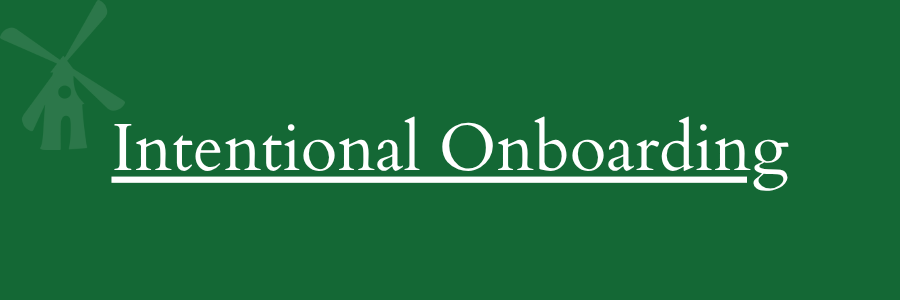HR Practice Lab
Exploration of People-Centered HR Strategy
-
A creative agency of 40 people has hired 10 new employees in the past quarter. Feedback shows that many of them feel disconnected, uncertain about expectations, and unsure of how to integrate with the team. The organization is seeing a rise in early turnover, and managers report inconsistent onboarding across departments.
-
Building a Human-Centered Onboarding Flow
This project reimagines onboarding as a structured, people-first experience that prioritizes clarity, connection, and long-term integration.
Key Elements:
Welcome Email with Personal Touchpoints: Sent 3–5 days before start date, introducing values, key contacts, and what to expect.
Day 1 Start-Up Checklist: Includes a team welcome meeting, light introduction to culture, and time for personal orientation.
First 30-Day Roadmap: A simple plan with weekly learning goals, social integration moments, and manager check-ins.
Peer Partner Program: New hires are paired with experienced teammates to help them navigate informal questions.
Team Alignment Session: In week 2, new hires attend a collaborative meeting to review how the team communicates, makes decisions, and supports well-being.
-
Higher engagement in the first 30 days
Stronger team connections across roles
Less ambiguity for new hires and managers
Consistent and values-aligned onboarding process
-
When people start a new role, they need more than instructions—they need support systems that help them feel steady, seen, and clear about their contribution. Onboarding should ease the transition and reflect the values of the organization in action.
-
In a midsize nonprofit, several key systems and institutional processes are controlled by a single long-standing team member who’s been with the organization for over a decade. They hold exclusive access to donor databases, internal passcodes, operational workflows, and grant timelines. While well-intentioned, this centralization of knowledge has created a bottleneck and a quiet but real power imbalance.
Newer team members often feel hesitant to ask questions. Projects slow down when this employee is unavailable, and transitions (such as onboarding or offboarding) are disorganized. Leadership is unsure how to redistribute knowledge without offending the team member.
-
Building Shared Knowledge Systems and Normalizing Access
This practice addresses power-by-default created through time-based tenure and undocumented processes. The aim is not to remove responsibility but to create collective clarity and shared infrastructure.
Key Actions:
Conducted a “Keys & Access” Inventory
→ Mapped all digital and physical access points (documents, passwords, software, process know-how), and who currently controls them.Introduced a Central Knowledge Hub
→ Created a shared Google Workspace or Notion site housing SOPs, key timelines, account credentials (via password manager), contact lists, and grant calendars.Facilitated a “Legacy to Leadership” Session
→ Held a conversation with long-tenured staff to reframe their role: from sole keeper of knowledge to mentor and guide during knowledge transfer.Documented Core Processes
→ Turned key workflows (e.g., onboarding, grant writing, finance procedures) into visual step-by-step guides accessible to all.Policy Shift: Shared Responsibility Model
→ Set expectations that no one person should be the single point of knowledge for any core function—rotating training and shared documentation became the norm.
-
Greater continuity when staff are absent or leave
Reduced dependency on one person
Improved morale among newer staff who feel included and resourced
Healthier, more resilient organizational culture
-
When knowledge lives in one person’s head, it becomes currency and unintentionally creates hierarchy. Equity means designing systems where knowledge is shared, documented, and accessible, so people can focus on impact, not navigating invisible power lines.
-
Description text goes here
-
Mapping Power and Increasing Transparency
This practice explores how reviewing decision-making norms and informal power channels can unlock equity and clarity.
Key Actions:
Conducted a Power Mapping Workshop to visualize who holds decision authority vs. influence across teams.
Policy Audit focused on access: who is included in budget planning, hiring, promotions, and conflict resolution.
Introduced a Shared Governance Matrix defining which decisions require input, recommendation, or ownership across roles.
1:1 Listening Interviews with frontline staff to identify experiences of exclusion or unclear processes.
Leadership Coaching to help directors recognize legacy behaviors (gatekeeping, overcontrol, bottlenecks).
-
Founder spending more time in strategy and less in daily task churn
Employees feel empowered to own their roles
Clearer communication and reduced dependency on the owner
Healthier team dynamics and stronger retention
-
Delegation is more than handing off tasks. It involves building a team that can move with clarity and confidence




